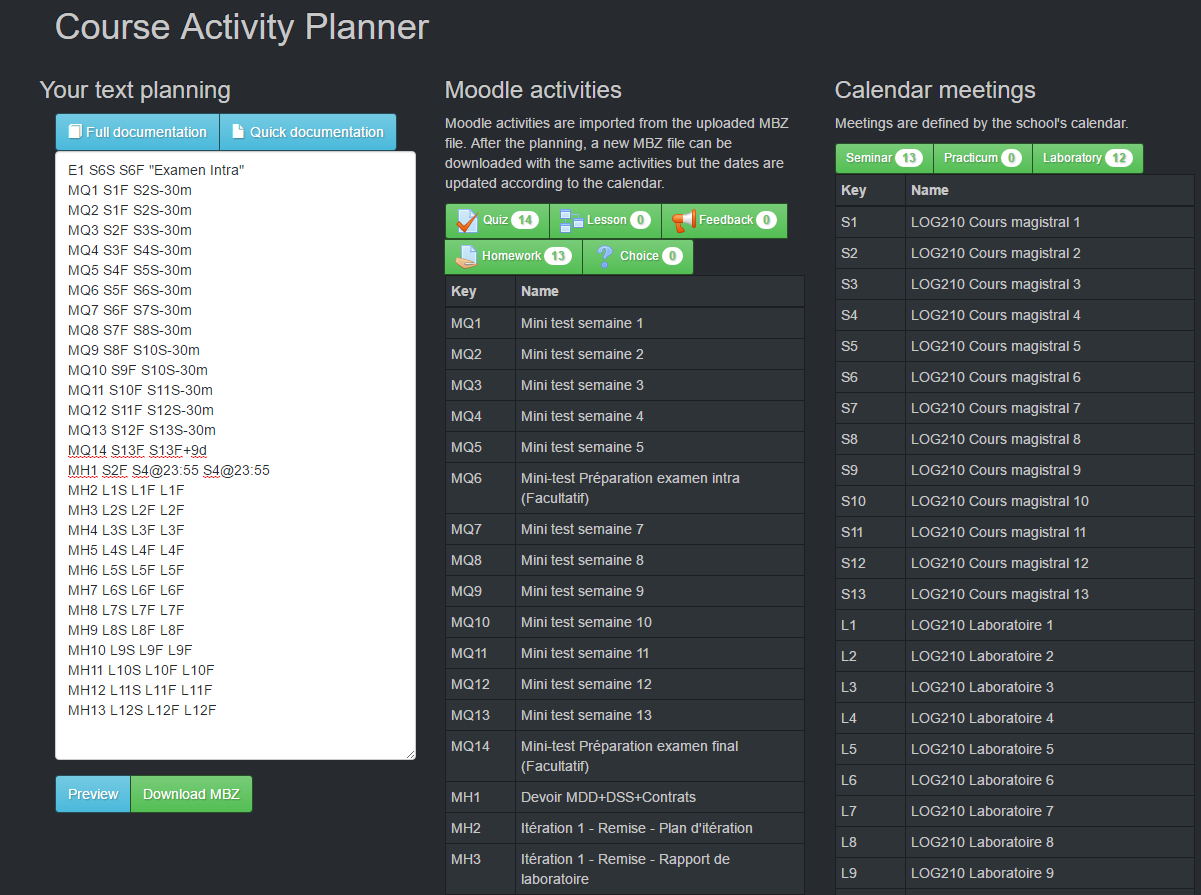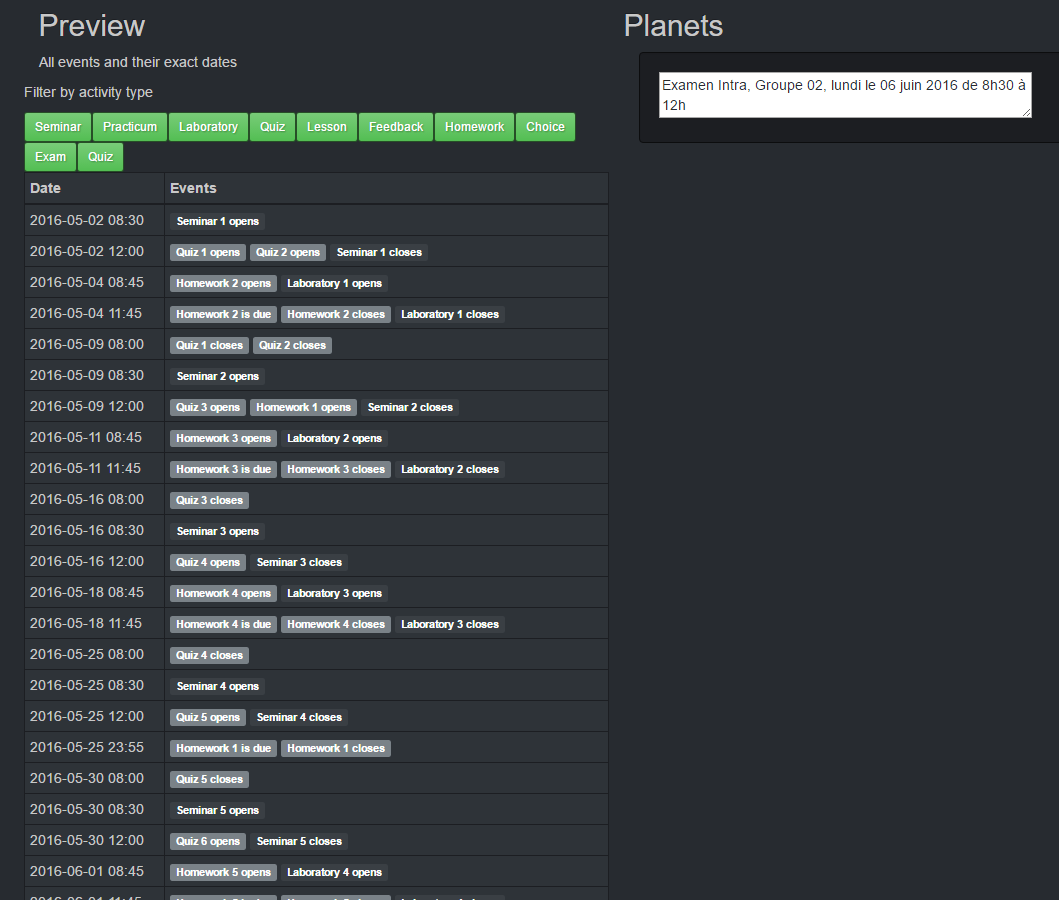This project is affiliated with the Maison du logiciel libre (ML2) at .
Table of Contents generated with DocToc
Tool for instructors to plan course activities and synchronize the data with syllabus, LMS, etc.
Moodle courses can be cloned and updated with new activity dates from a calendar. Why?
Moodle activities can be planned relative to Seminars, Practica and Laboratories. Each activity adapts its start and end dates with the calendar of specific dates.
<activity to plan> <start at activity> <end at activity>
Ex: Quiz 1 is opened on Seminar 1 and closed right before Practicum 2 would be possible with this line: Q1 S1 P2
MQ1stands for Moodle Quiz 1S1stands for Seminar 1P2stands for Practicum 2
Generic activites which are not linked to Moodle content can also be created.
By default, Quizzes and Exams can be planned without any Moodle file.
Adding F to an activity will read the finishing time of the activity. Adding nothing or S will read the start time.
Ex: Quiz 1 is opened right after Seminar 1 and closed right after Practicum 1 would be Q1 S1F P1F
Amounts of time can be subtracted or added to activities.
Supports + or - combined with
- minutes:
m - hours:
h - days:
d - weeks:
w
Ex: 1 hour after Seminar 1 would be S1+1h.
Ex: 15 minutes before Practicum 2 would be P2-15m.
Ex: Quiz 1 is opened 1 hour after Seminar 1 and closed 15 minutes before Practicum 2 would be Q1 S1+1h P2-15m
The exact hours can be set to an activity.
Ex: the day of Seminar 1 at 23:55 would be S1@23:55.
This can be used along with relative date or time modifiers.
Ex: the day before Seminar 1 at 23:55 would be S1-1d@23:55.
Please Note when used with a relative modifier, the time modifier must be last.
S1-1d@23:55 is valid
S1@23:55-1d is invalid
Activities can be configured by the administrator. Please refer to examples in python/config/activities.
-
Create a google application with Identity Toolkit API access. Create an oauth2 client as a web application and save the client id. This id needs to be put in config/.
-
Setup a python virtualenv
cd python && virtualenv-3.4 env
- Activate the python virtualenv
. env/bin/activate
- Install pip dependencies
pip install -r requirements.txt
- Run it
./course_activity_planner.py
- Install bower dependencies
cd .. && bower install
- Run the test suite
nosetests
- Optionally, you can get a coverage report
nosetests --with-coverage
pep8 && flake8
Please see deploy/README.md







